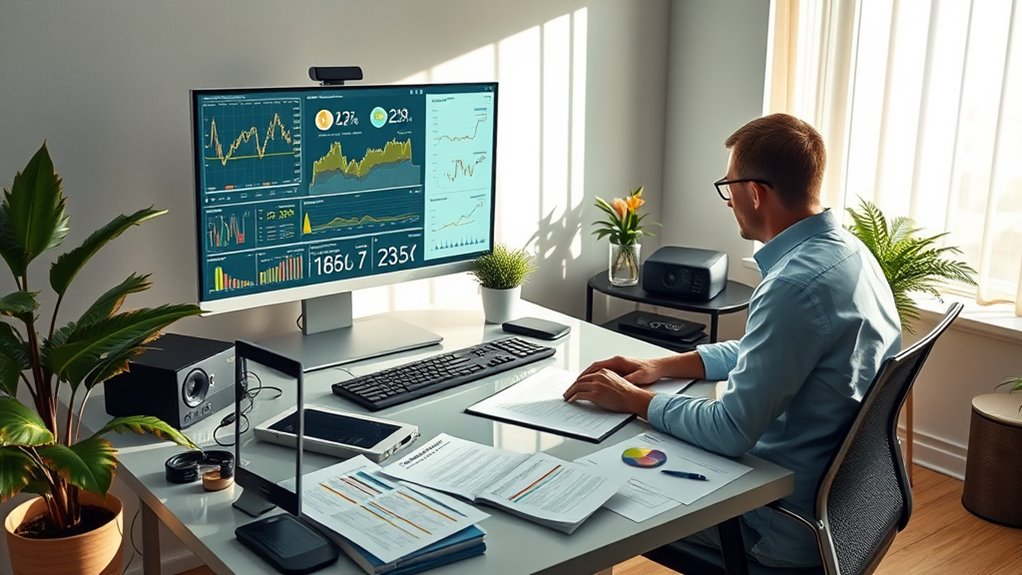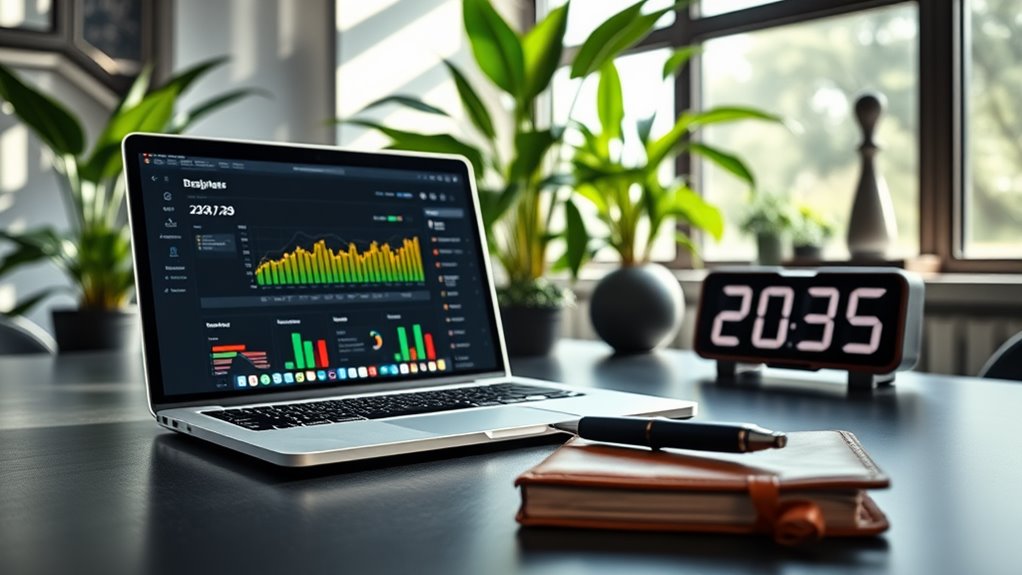Thinking about dipping your toes into crypto in 2025? You’re not alone. Millions are drawn to the potential of this revolutionary technology and the investment opportunities it presents. However, for newcomers, the sheer volume of information – and misinformation – out there can be overwhelming, making it hard to know where to start, let alone how to stay safe.
This Beginner’s Guide is designed to be your trusted companion, walking you through the essential knowledge and concrete steps required to invest in crypto safely in 2025, helping you protect your assets and build a secure foundation from the ground up.
What You Should Know
- Start with a trusted crypto exchange that offers strong security features and regulatory compliance while verifying your identity properly.
- Limit crypto investments to 10% of your portfolio and never risk more than 1-2% of capital per trade.
- Use hardware wallets for long-term storage and keep 90% of holdings in cold storage for maximum security.
- Enable two-factor authentication on all accounts and maintain strict password security practices.
- Set clear entry and exit points before trading, and avoid making emotional decisions during market volatility.
Crypto 101: What You Need to Know Before Starting

While cryptocurrency might seem as complex as quantum physics at first glance, you’ll be relieved to know it’s more like learning to ride a bike – tricky at first, but second nature once you get the hang of it.
Think of cryptocurrency as digital money that doesn’t need a bank to work (mind-blowing, right?). It runs on something called blockchain – imagine a digital ledger that thousands of computers maintain simultaneously, making it nearly impossible to hack or manipulate.
Bitcoin leads the pack, but there’s a whole universe of options like Ethereum, which adds smart contracts to the mix.
Unlike your regular bank account, crypto operates without a central authority. Instead, it’s all peer-to-peer, secured by complex math that’d make your high school algebra teacher proud.
You’ll use a digital wallet to store your crypto, protected by a private key – basically your digital combination lock.
Remember: losing this key is like dropping your wallet into a black hole – there’s no customer service desk in crypto-land!
Experts recommend investing no more than 10% of your overall portfolio in cryptocurrencies.
Understand the Risks

While the potential rewards of crypto investing can be tantalizing, you’ll need nerves of steel to handle the rollercoaster ride ahead.
First, there’s the heart-stopping volatility that causes random price hikes and drops.
Then there are geopolitical influences, where one tweet from a world leader can send prices soaring or crashing.
Add in regulations that change more often than superhero movie reboots, and you’ve got yourself quite the challenge.
The kicker? Even big financial institutions are still figuring this out. Starting with small investments might help you build risk tolerance while learning the ropes.
Remember: in crypto, fortune favors the prepared!
Choose a Safe Cryptocurrency Exchange

Now that you’ve got your risk parachute packed, let’s find you a safe landing pad!
When choosing a crypto exchange, always prioritize security and regulatory compliance. Look for exchanges that offer strong security features including two-factor authentication, biometric logins, and cold storage.
Don’t skimp on user interface either – a clean, intuitive platform will make your trading journey much smoother.
Pay close attention to trading fees and withdrawal limits, as they’ll impact your bottom line.
Make Your First Investment: The Buying Process

Start small, like dipping your toes in a pool rather than cannonballing into the deep end. Begin with a test transaction of $25-50 to verify everything works smoothly. Choose a mainstream cryptocurrency (Bitcoin or Ethereum are solid starter picks), and use a simple market order for your first buy. Consider using proof-of-stake systems for more energy-efficient options when selecting cryptocurrencies.
Once you’re ready to trade, you’ll encounter different order types that’ll determine how your purchase executes.
- Market orders – Buy immediately at current price.
- Limit orders – Set your ideal price and wait patiently.
- Stop orders – Protect yourself from market dips.
Protect Your Assets

Buying crypto is one thing – keeping it safe is a whole different ball game!
Think of your crypto wallet like a digital Fort Knox – you’ll want the security equivalent of laser beams, guard dogs, and retinal scanners to protect your digital gold.
Here’s your essential security checklist to keep those crypto coins locked down tight:
- Test your backup restoration process regularly – because Murphy’s Law loves crypto
- Get a hardware wallet (like Ledger or Trezor) for serious holdings – it’s your crypto’s panic room
- Write down your seed phrase on paper and store it somewhere safe (not in your “tax stuff” folder!)
- Enable authenticator app 2FA everywhere – SMS protection is about as secure as a screen door on a submarine.
- Never, ever share your private keys online.
Build Your Portfolio Safely

Building your first crypto portfolio feels a lot like assembling your dream sports team: you need star players, solid role-players, and a few promising rookies.
You’ll want to follow proven portfolio diversification strategies that balance risk and reward.
Start with these battle-tested fundamentals:
- Make Bitcoin your MVP, keeping 40-60% of your portfolio in crypto’s most trusted player.
- Draft Ethereum as your reliable second-in-command, leveraging its smart contract capabilities.
- Round out your roster with 2-3 established altcoins from the top 10, but never put more than 10% in any single coin.
Keep 10-20% in stablecoins so you’re always ready to jump in when market conditions create buying opportunities.
Also, dollar-cost averaging is your best friend. Invest fixed amounts regularly instead of going all-in.
How to Research Crypto Projects

Before you dive headfirst into a crypto project like it’s the last slice of pizza, you must become a digital detective.
Think of it as binge-watching your favorite show – you wouldn’t start at the final episode, right? You need to dig deep and understand the whole story.
Start with some white paper analysis. This is your background check that’ll reveal if a project is brilliant or just hot air wrapped in fancy buzzwords. Look for clear goals, solid tech architecture, and realistic timelines.
Then move on to team evaluation – you wouldn’t trust your savings to strangers, right? Research the developers’ track records, check their LinkedIn profiles, and see if they’re active in the crypto community.
Watch for red flags like anonymous team members or overblown promises of “guaranteed” returns.
You could also check its community engagement on Discord, Reddit, and Twitter. And, track the project’s market performance and compare it to competitors.
Risk Management

Three essential pillars stand between you and a crypto catastrophe: smart position sizing, rock-solid security, and ice-cold emotional control.
Smart risk management is your life jacket in these choppy waters. Start by never risking more than 1-2% of your total capital on a single trade – trust me, your future self will thank you.
Think of diversification as your crypto safety net. Spread your investments across different tokens, just like you wouldn’t put all your eggs in one digital basket.
Multi-signature wallets provide an extra layer of protection against unauthorized access to your funds.
Use stop-loss orders as your emergency brake, and don’t forget to take profits when the getting’s good! For long-term holdings, treat your hardware wallet like Fort Knox – those private keys deserve military-grade protection.
Remember: even the savviest traders get the jitters. That’s why having a solid plan beats FOMO every time!
Frequently Asked Questions
How Do Taxes Work on Cryptocurrency Gains in Different Countries?
You’ll need to keep your ducks in a row with crypto tax implications – different countries handle capital gains uniquely, from complete exemptions to progressive rates reaching 55% on earnings.
What Happens to My Crypto Assets if I Pass Away?
Your crypto assets will transfer to heirs through inheritance planning, but they’ll need private keys and account details. Create clear documentation and update your estate plan for proper asset distribution.
Can I Get My Cryptocurrency Investments Insured Against Theft or Loss?
You can absolutely protect your digital wealth through crypto insurance, offering essential theft protection. While coverage options vary dramatically, many providers now offer extensive policies to safeguard your cryptocurrency investments.
How Do Government Regulations Affect Cryptocurrency Prices Across Different Regions?
You’ll see cryptocurrency prices shift based on regional differences in regulations. When one region tightens control while another loosens it, the regulatory impact creates price variations across markets.
What Role Do Social Media Influencers Play in Cryptocurrency Price Movements?
You’ll find influencer impact dramatically affects crypto prices, as their posts can shift market sentiment instantly. They’re 400% more influential on cryptocurrencies compared to traditional assets.




